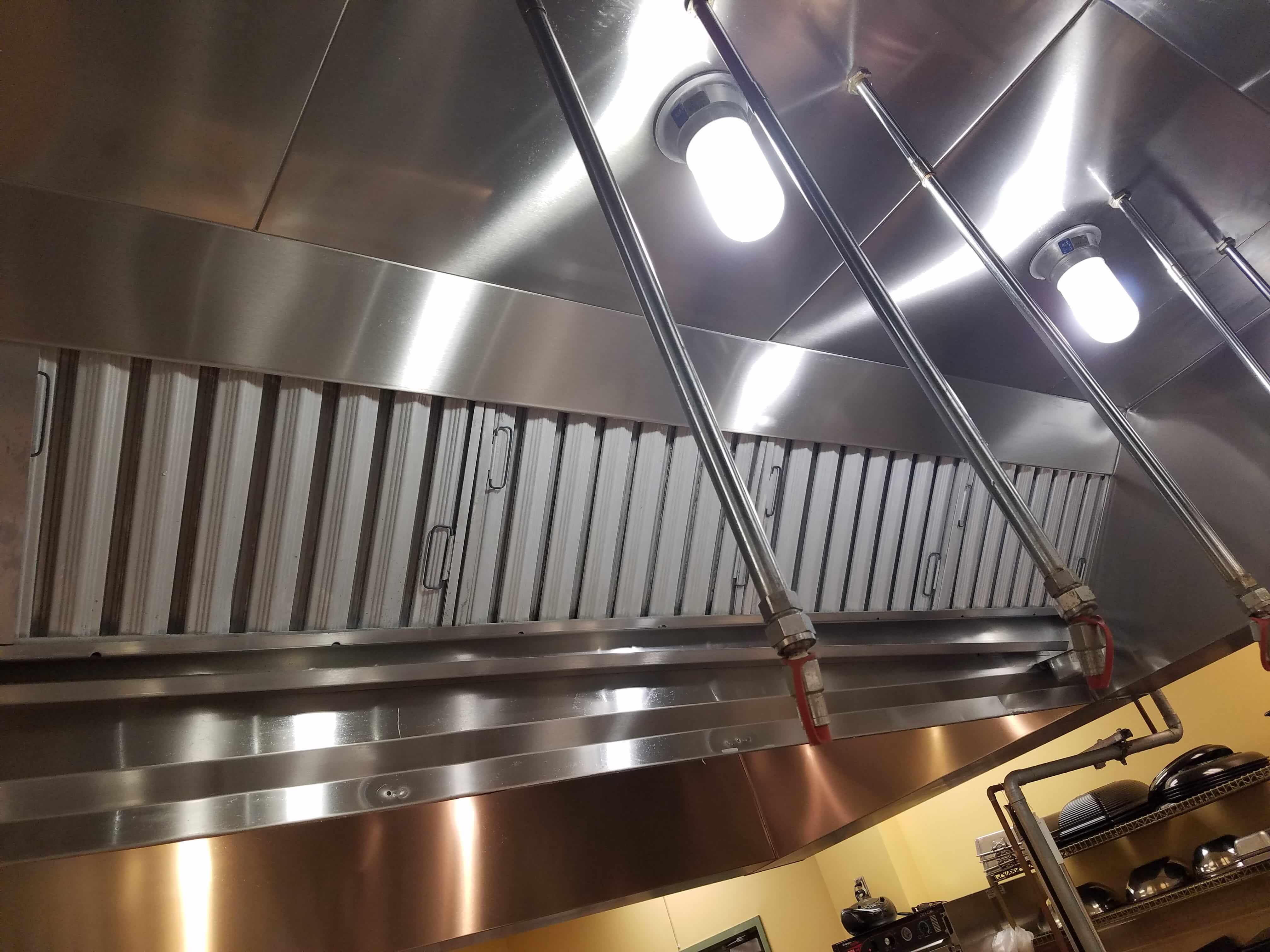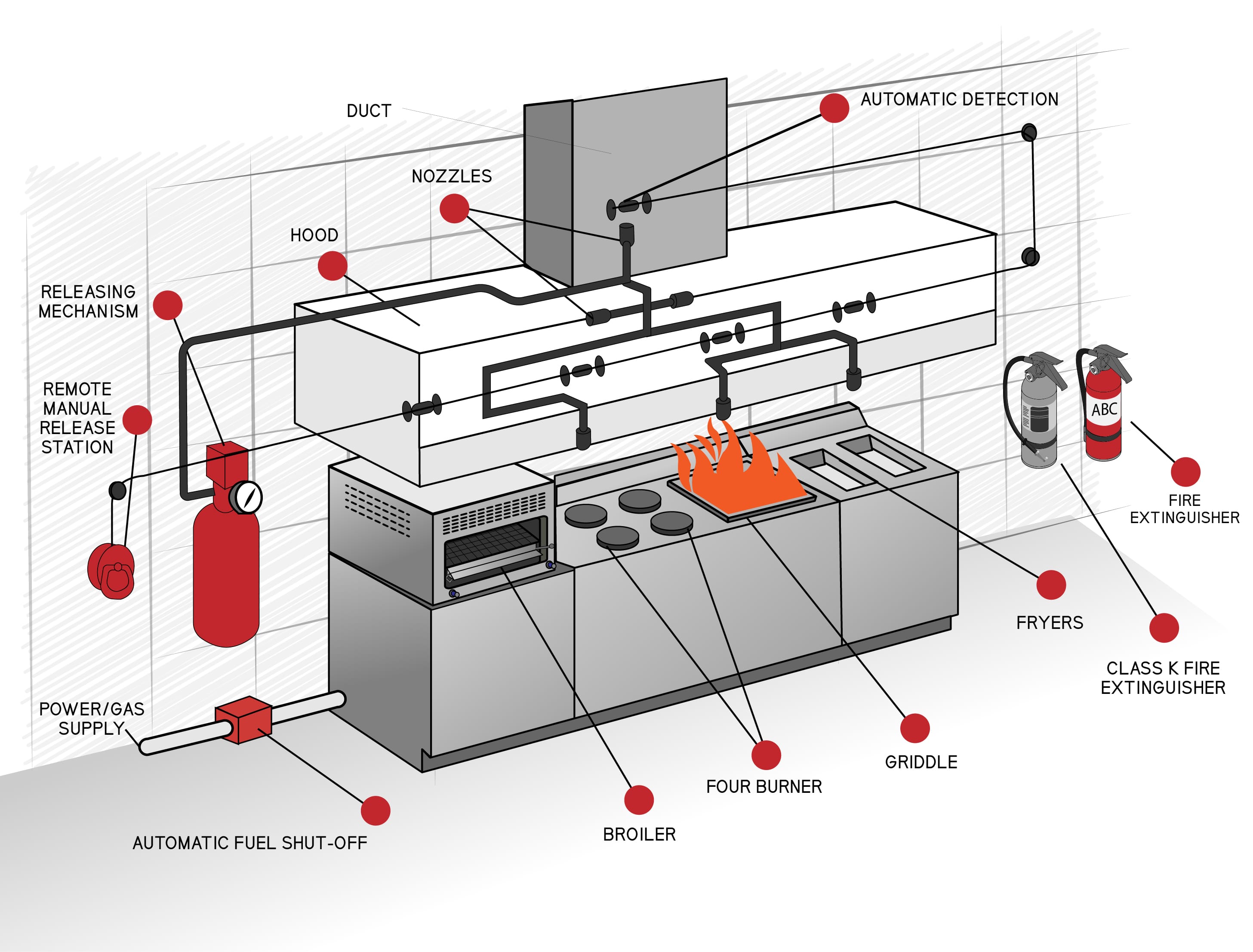
The Science Behind Hood Cleaning: How Grease and Grime Are Removed
Kitchen hoods play a crucial role in maintaining a clean and safe environment in both commercial and residential kitchens. They are designed to filter out smoke, grease, and other pollutants that result from cooking. Over time, these filters become clogged with grease and grime, necessitating regular hood cleaning to ensure optimal performance and maintain a sanitary kitchen. In this blog, we will explore the science behind hood cleaning, the techniques and equipment used, and the importance of hiring professionals for this task.
The Science of Hood Cleaning
To understand how grease and grime are removed from kitchen hoods, we must first comprehend the nature of the substances being removed. Grease is a complex mixture of fats, oils, and other organic compounds that are insoluble in water. Grime, on the other hand, is a combination of dirt, soot, and other particulate matter that adheres to surfaces. The removal process involves breaking down these substances and suspending them in a solution, which can then be washed away.
Chemical Degreasing
The primary method used in hood cleaning is chemical degreasing, which involves using specially formulated degreasers to break down grease and grime. These degreasers contain powerful surfactants, alkaline substances, and solvents that can emulsify grease, making it soluble in water. The degreasing process usually involves the following steps:
a) Pre-treatment: The hood is first pre-treated with a degreaser to loosen the grease and grime. This process helps to break the strong bonds between these substances and the hood surface.
b) Application of the degreaser: The degreaser is then applied to the entire hood surface, paying special attention to heavily soiled areas. The degreaser is typically allowed to sit for a specified period to penetrate and break down the grease and grime.
c) Agitation: To further enhance the effectiveness of the degreaser, a combination of brushes, scrapers, and other tools are used to agitate the grease and grime. This process helps to dislodge stubborn deposits and ensures that the degreaser can penetrate all areas of the hood.
d) Rinsing: Once the degreaser has had time to work, the hood is thoroughly rinsed with hot water. The hot water helps to dissolve the emulsified grease and grime, allowing it to be easily washed away.
Steam Cleaning
In addition to chemical degreasing, steam cleaning is another popular method used in hood cleaning. This technique involves using high-pressure steam to remove grease and grime from the hood surfaces. The high temperature of the steam helps to soften and liquefy the grease, while the pressure of the steam effectively dislodges stubborn deposits. Steam cleaning is particularly effective for heavily soiled hoods, as it can penetrate deep into crevices and hard-to-reach areas.
Equipment Used in Hood Cleaning
Various specialized equipment is used in hood cleaning to ensure thorough and efficient removal of grease and grime. Some of the most common tools and equipment include:
Pressure Washers: These machines generate high-pressure water jets, which are used to rinse away the emulsified grease and grime during the cleaning process. Pressure washers can be either hot or cold water models, with hot water models being more effective at dissolving grease.
Steam Cleaners: Steam cleaners produce high-pressure steam, which is used to remove grease and grime from hood surfaces. These machines are typically equipped with various attachments and nozzles to facilitate the cleaning process.
Scrapers and Brushes: A variety of scrapers and brushes are used to agitate and dislodge grease and grime during the cleaning process. These tools come in various shapes and sizes to accommodate different hood designs and configurations.
Degreasing Chemicals: Specially formulated degreasers are essential for breaking down grease and grime during the chemical degreasing process. These degreasers are designed to be safe for use on kitchen equipment and surfaces while being highly effective at emulsifying grease.
Protective Gear: Hood cleaning professionals wear protective gear such as gloves, goggles, and aprons to protect themselves from the chemicals and high-pressure water used during the cleaning process.
The Importance of Professional Hood Cleaning Services
While it may be tempting to attempt hood cleaning as a DIY project, it is essential to hire professionals for several reasons:
Safety: Hood cleaning involves the use of potentially hazardous chemicals and high-pressure equipment, which can pose a risk to inexperienced users. Professionals are trained in the proper handling and use of these materials and equipment, ensuring a safe cleaning process.
Efficiency: Professional hood cleaning services have the experience, knowledge, and equipment to clean your hood thoroughly and efficiently. DIY methods may not be as effective, leading to incomplete removal of grease and grime and potential fire hazards.
Compliance: Commercial kitchens are subject to strict regulations and inspections regarding hood cleanliness. Professional hood cleaning services are familiar with these requirements and can ensure that your kitchen remains in compliance with local codes and standards.
Preventive Maintenance: Regular professional hood cleaning can help to extend the life of your hood and exhaust system by preventing the buildup of grease and grime, which can lead to corrosion and mechanical failure.
Conclusion
Hood cleaning is a crucial aspect of maintaining a safe and sanitary kitchen, whether in a commercial or residential setting. Understanding the science behind hood cleaning, as well as the techniques and equipment used, can help you appreciate the importance of this task and the need for professional services. By hiring trained professionals to clean your hood, you can ensure a thorough and efficient cleaning process that keeps your kitchen safe and in compliance with regulations.


